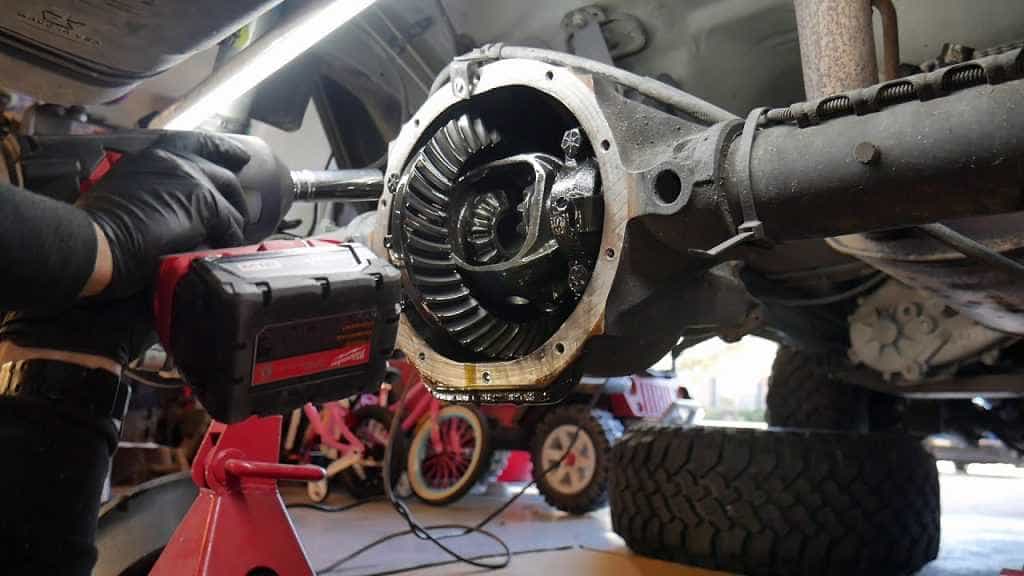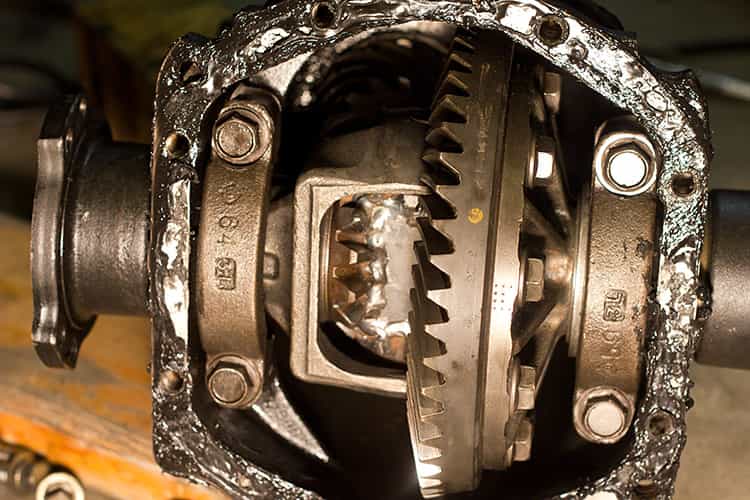Perhaps you are looking to improve the performance of your vehicle and have been wondering – is a welded diff illegal?
Now, there are many reasons why you want better traction for your vehicle. For instance, you may be into road racing. Or you want to hit the drag strip, and perhaps even engage in off-road wheeling. Whatever it may be, there are several things you can do to achieve all of these and improve your vehicle’s performance.
Additionally, there are folks who like to weld their diffs, so they can achieve a more satisfying riding experience. There are even mini spools, spools, as well as other methods to try. However, when it comes to getting both of your wheels spinning, there are so many techniques that can help you achieve all of these.
Today, we will talk about welded diff in vehicles – how to do it and whether it is legal or not. Let’s jump right into it.

Is A Welded Diff Illegal?
First of all, welding your differential can do so much to your vehicle. But at the same time, those who are not even an expert in this can end up trashing their ring, axle shafts, pinions, and several other vehicle components.
This is why it is so much better to just make sure that you are doing it the right way. Now, in terms of welding the differential, it is actually useful when you want to fix your spider gears to your carrier. This way, both of your axle shafts are able to move at a similar rate.
However, this does not mean you weld your axles, pinion shaft, or axle C-clips. If you attempt to do this, you may not take apart your differential anymore. Well, at least not in a conventional manner. You also have to avoid accidentally getting some spatter or weld on your pinion gears and ring. If you do this, it can ruin your gears’ machined surfaces. Or worse, the gears may not be able to move at all.
With that being said, any weld spatter on your machined surface can cause significant damage to your diff. This is why it is very important to take the differential right out of your housing when you are welding it. You also need to be prepared to reset the gear mesh pattern and backlash when you do this.
If you leave your carrier inside the housing you are welding, it is essential that you mask the surfaces off to protect from spatter. Do not forget to do the same to your pinion gears and ring. Some people even use some tin foil in covering their gears and the gaps located between the case and the carrier. By doing so, this eliminates too much spatter in their housing.
Now, if you are looking to weld your diff, the first step is to remove the cover and drain your gear oil from your housing. If you do not need to remove your carrier prior the welding process, then you can hose your differential out using a cleaner or a solvent.
But mind you – it is absolutely necessary that you conduct ample research when deciding on the cleaner to use. Chlorinated brake cleaner is the worst that you can ever use – and it is even fatal. For some people, they use acetone when they perform the final cleaning. But there are those who believe it is dangerous, as well. So, do the best you can in researching the right product you can use with the least harm on you.

Once you have cleaned your differential, the next step is the welding process. It is important that your consumables are of good quality. Ensure the right settings of your machine, and the ground on which you are doing the welding is stable enough. By doing so, you can reduce the possibility of spatter. Add weld on the area where your diff side gears meet your spider gears. This way, you can prevent unnecessary moving.
Additionally, you have to add just the right amount of weld to prevent the parts from coming loose. In the case of a lower stake project, welding the spider gears and side gears to your carrier also helps. This will make sure your entire assembly acts as a single piece moving forward.
Some people even weld just a small piece of steel against their spider and side gears, which fills the gap right in the middle. Not only does this add extra strength, but it also provides an additional surface for welding, which then joins the four gears.
Once you have finished the welding process, you need to make sure everything gets cool enough. Then, pick off some spatter you see on your machined gear. Clean your differential housing, as well as your gears using solvent. Then, take any spatter out that you see floating around your case.
There are even some people who choose to install their differential cover by filling it with gear lube prior to turning their assembly. This process helps to free any concealed spatter while preventing any load on their differential. Afterwards, you may want to drain your gear lube and continue the process.
So, these are just the steps to weld your diff. But you may wonder – is it a good idea, is it worth it, or is it even legal?
Well, if you do it right, and you use the right tools, it should be fine. But we do not recommend doing this on a vehicle you normally use on a daily basis. It may even make your car difficult to drive. Plus, the driveline components end up being in harm’s way when you use your vehicle on the street with this particular setup.
Generally, the police do not have issues with welded diffs, as reported by those who had it done to their older vehicles. There is nothing wrong or even illegal about it, or at least with a locked diff. But you may run across legal issues when you drive without proper care, or when you drift on a public highway.
It is not that it is illegal to drive with a welded diff. The issue is with how people behave or use their car with this setup.
Read More: Why Are Heim Joints Illegal? Important Things You Should Know
Conclusion
So, is a welded diff illegal? There are many vehicles that have a welded diff, and it is fine. But it is all about how you use your vehicle properly on a public road to make sure no damage is done to others.